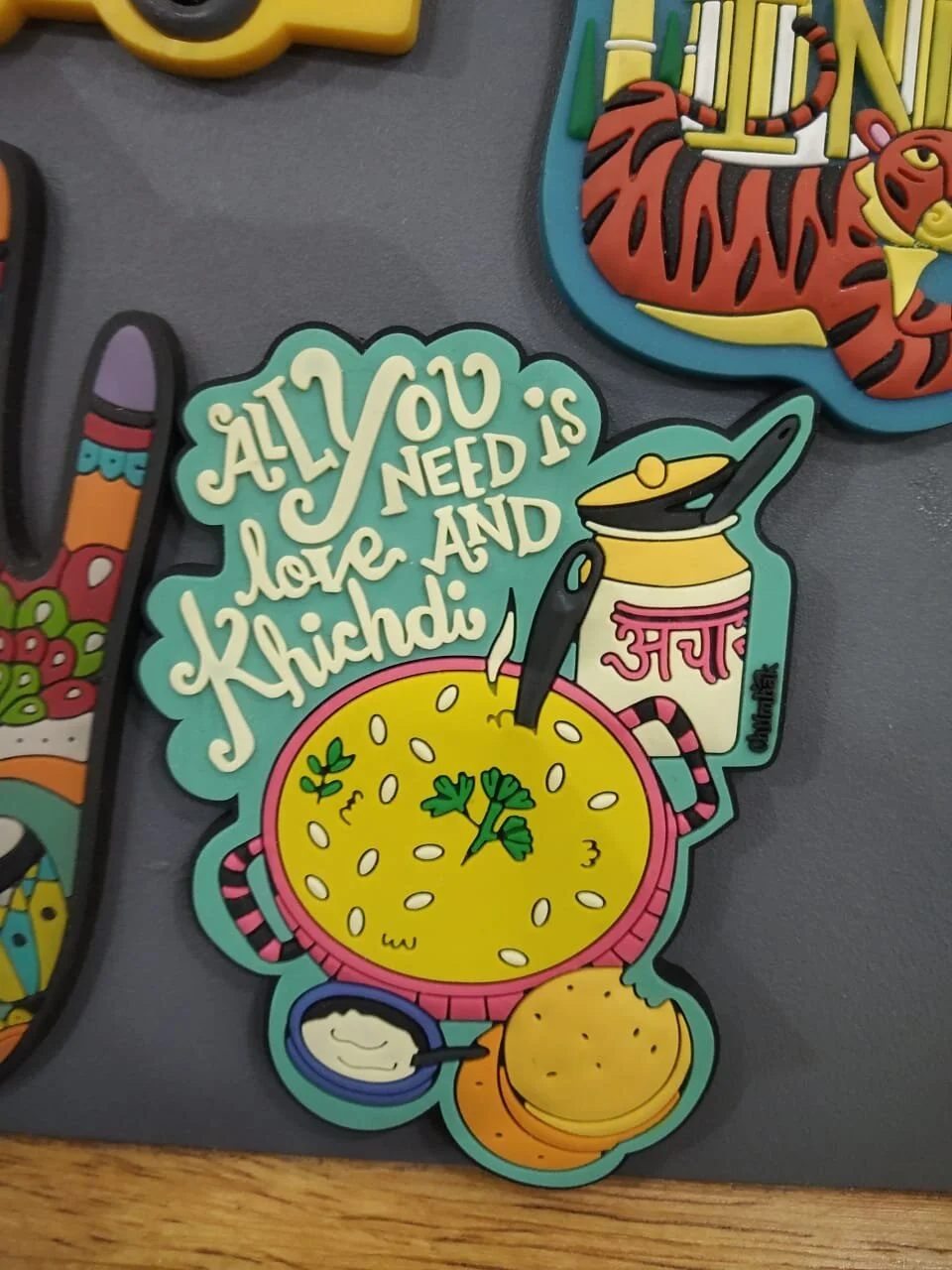Note: While Khichdi is regarded by many as a nutritious, can-do-no-harm food, and has existed in ancient ayurvedic literature (ancient Indian medicinal journals) as a food that cleanses and heals the digestive system, the food is not a one-stop solution to IBD, and there is always the chance that it does not suit everyone’s bodies. My views are not medically backed, as I am not a nutritionist, dietician or doctor; I talk about my journey of IBD with a food that has become dear to my heart (and tract).
Khichdi has a soft spot in the hearts of many South Asian people, not limited to just the IBD folks. It’s appeal to such a diverse diaspora over a varied amount of time is amazing but not surprising, due to its flexibility in becoming anything it’s fans desire. In India, a country with many inequalities, khichdi is a dish that can both dress up fancily as a wholesome comfort food for some, and strip down to a humble meal that provides a day of nutrition for others, becoming a unique thread that ties the polar opposite lifestyles of the rich and poor of India. It simultaneously also acts as a thread connecting the ill and healthy, with Ayurveda texts prescribing it as a staple meal as part of a larger lifestyle free from illness and pain, but is also a very popular meal outside of Ayurveda. It has its place in popular literature1, journals of travellers2, was chosen to be the main showcased food for World Food India 20173, has a dedicated restaurant to capture its varieties4, and is used widely as holy offerings in Hindu temples5. The meal has countless variations in all the states across the country, retaining its quality of being a trusty comfort food at its core, a pretty big feat considering all the various ways the states of India differ so widely.
When I first started showing symptoms of Ulcerative Colitis, among my many concerns, one big one was how my diet was going to be constricted to only khichdi. For a lot of the South Asian community, this restriction to their diet as they were diagnosed/even now when they show symptoms, is very relatable. I had observed a few years of my brother’s diet with UC before I started showing symptoms myself, and I cringed at how disciplined he was expected to be in eating bland khichdi, oftentimes for multiple meals, for days, weeks, even months at a time. My first few years of having UC, I followed the same path for the first couple of years, following treatment only in the Ayurvedic realm, which required many bland bowls of the rice meal. It’s safe to say I was sick (not the IBD way) and tired of it. It wasn’t until I was out on my own, in rural India for the first time, that I realized my need and dependence on the food I had come to rely on so much after learning to listen to my body. During my first few weeks of being in a remote village managing my flare ups, I was uncomfortable on many levels, and yet my memories shine with gratitude for the few times I was able to successfully find and/or be invited for a warm and simple meal of khichdi. It had effectively found a place in my heart as the one and only food that I could rely on, even in the remotest of places.
Below are my recipes for a flare-up version a and normal version I like to enjoy as my go-to comfort food:
Plain Khichdi (Flare-Up Version)
Ingredients:
1 cup rice (any, preferably broken)
¾ cup lentils (yellow mung split)
7-8 cups water
1-2 Tbsp ghee (clarified butter)
½ tsp turmeric
Salt to taste
Steps:
Wash rice and lentils in a bowl, and add to a pot on a stove.
Add salt and turmeric and bring to a boil.
Cover and put in on a medium-high heat. It will take 15-20 minutes to cook. It’s best to keep stirring occasionally and checking to get a porridge-like consistency.
When cooked, pour into a bowl and add ghee on top. Enjoy!
Khichdi with Vegetables (Normal Version)
Prepare Khichdi same as above.
For the Vegetables:
Ingredients:
2 inches bottlegourd, peeled and diced
1 carrot, peeled and diced
1 green bell pepper, diced
1 tomato, medium sized, diced
1 onion, medium sized, diced
1-2 Tbsp ghee
¼ tsp garam masala
¼ tsp paprika
Salt to taste
Steps:
While khichdi cooks, heat up a frypan with ghee.
Add the onion. When the onion turns translucent, add the tomato.
Add salt so the tomato mushes up quicker.
Add the carrot and cover the pan. Keep stirring occasionally. If needed, add water to fasten the cooking.
When the carrot is soft, add the bottlegourd. Cover the pan and let it cook, checking from time to time.
After the bottlegourd is cooked as well, add the bell pepper.
Depending on how mushy you like you bell pepper, add your spices (garam masala and paprika) and remove from heat. Keep the pan covered for some time.
Plate on top of the bowl of khichdi. You can add more ghee on top as per your liking. Enjoy!
Khichdi is generally paired with plain yogurt in India, as well as pickles and papadum (crispy lentil chip).
1 https://www.moralstories.org/birbals-khichririce/
2 https://www.thebetterindia.com/119823/khichdi-history-brand-india-food/
3 https://seachef.com/khichdi-gets-ultimate-boost-to-be-promoted-as-brand-india-food/
4 https://khichditgf.com/
5 https://metrosaga.com/indian-temples-and-their-prasadams/



